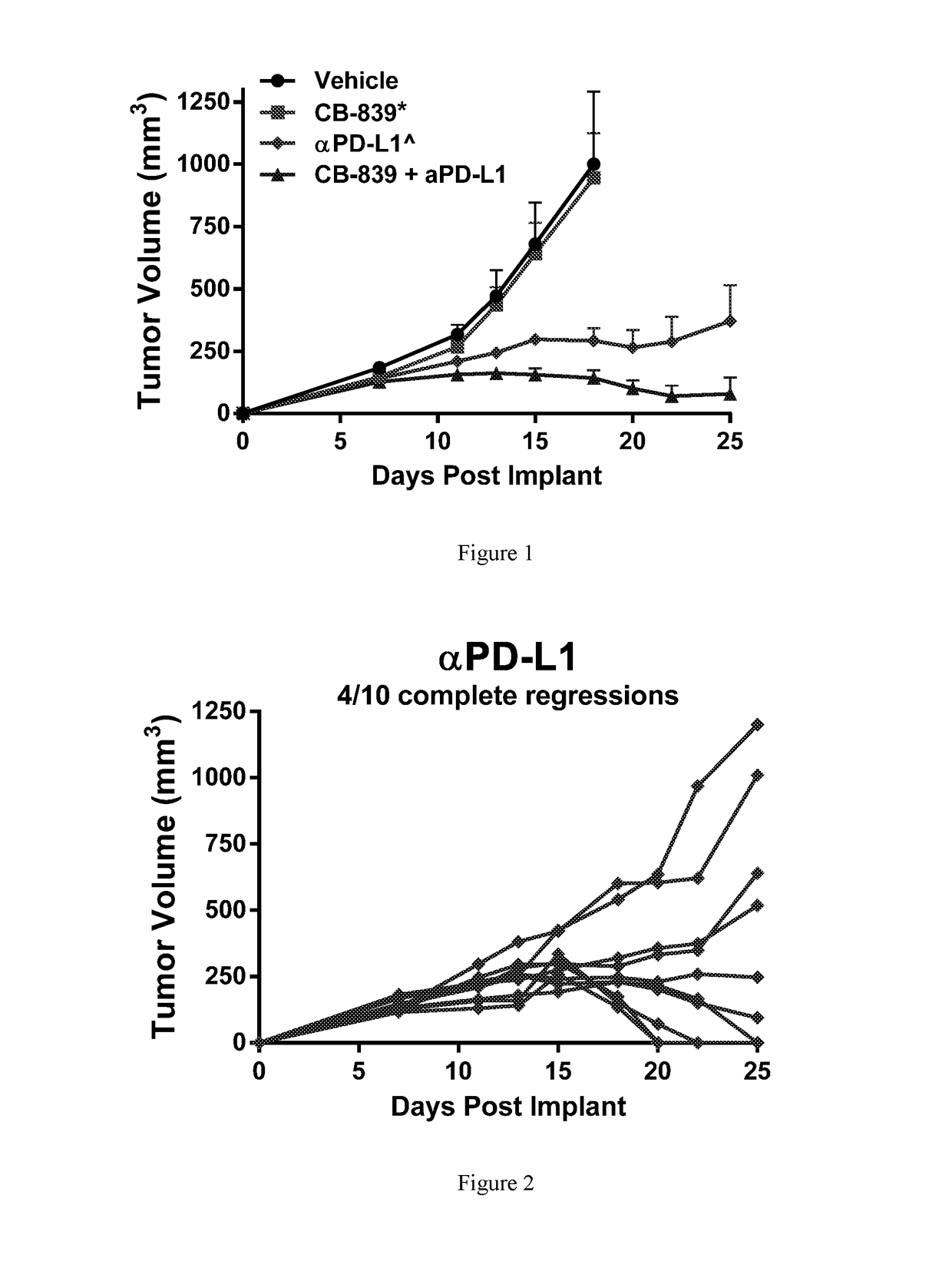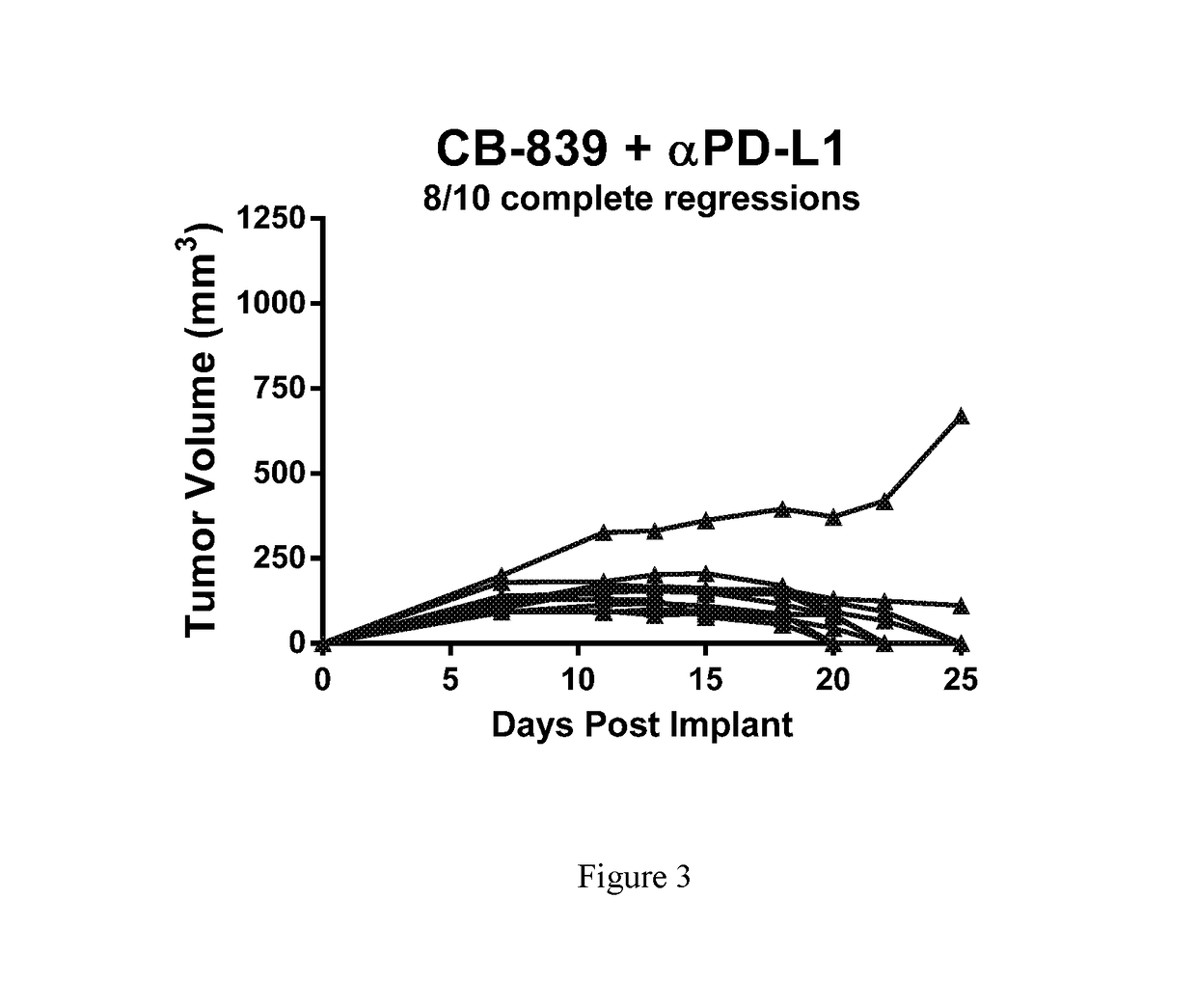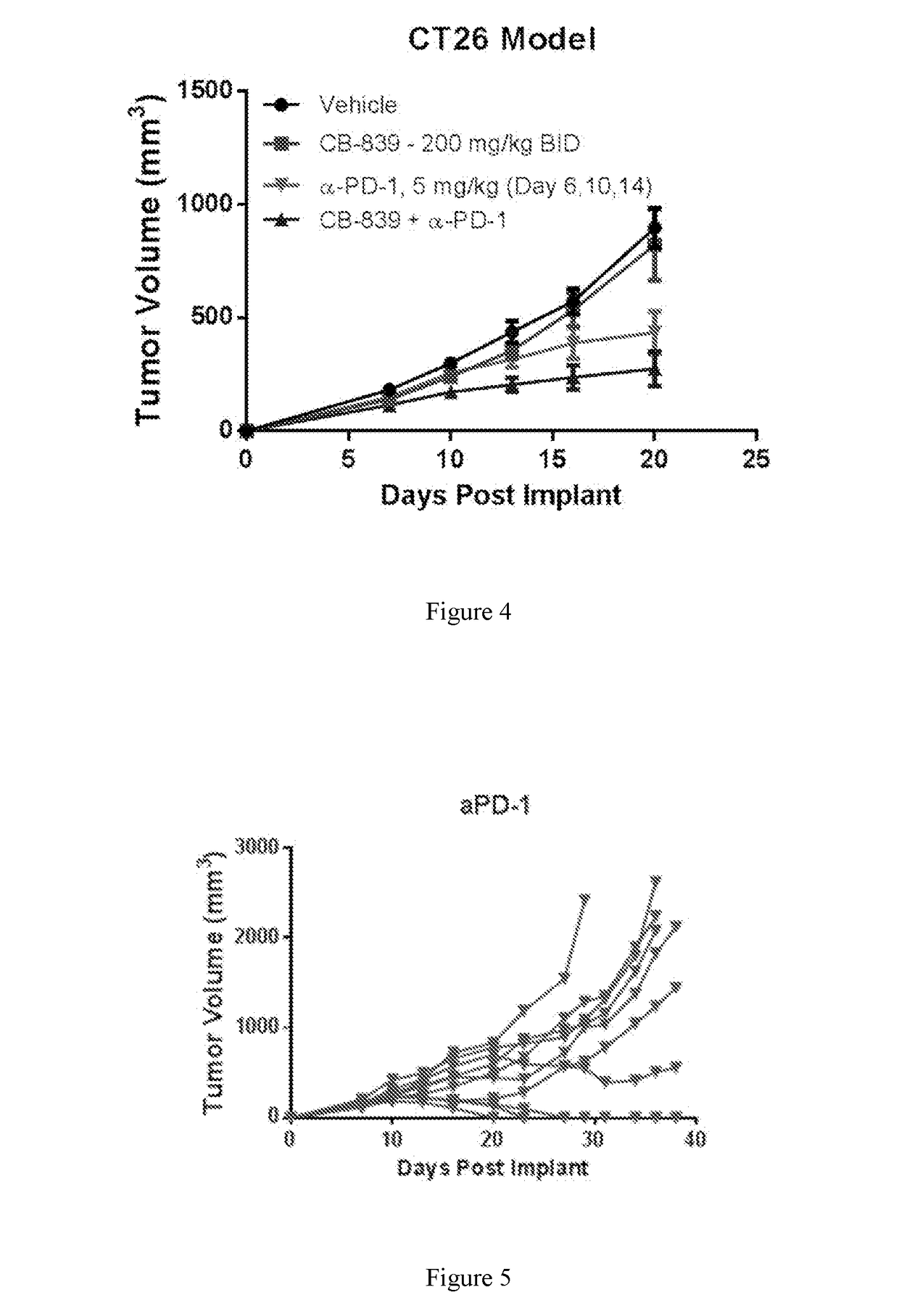Combination therapy with glutaminase inhibitors and immuno-oncology agents
a technology of immunooncology and glutaminase inhibitor, which is applied in the field of conjugation therapy with glutaminase inhibitor and immunooncology agent, can solve the problems of complex interplay between these pathways, invasion of essential organs and often death, and inability to fully understand the effects of these pathways
- Summary
- Abstract
- Description
- Claims
- Application Information
AI Technical Summary
Benefits of technology
Problems solved by technology
Method used
Image
Examples
example
Example 1
[0237]Female balb / c mice were implanted subcutaneously with 1×106 CT26 colon carcinomal cells suspended in phosphate buffered saline (PBS). Twenty-four hr post-implant, groups of n=10 mice were randomized to the following groups: 1) Vehicle control (25% Hydroxypropyl-β-cyclodextrin) dosed orally BID starting 24-hr post-implant; 2) CB-839 at 200 mg / kg (formulated at 20 mg / mL in 25% HP-β-CD) dosed orally BID starting 24-hr post-implant; 3) Anti-PD-L1 (clone 10F.9G2) at 5 mg / kg given IP on Days 5, 7, 9, 11, 13 and 15; or 4) the combination of CB-839 at 200 mg / kg PO BID plus anti-PD-L1 at 5 mg / kg given IP on Days 5, 7, 9, 11, 13 and 15. Tumors were measured with digital calipers and tumor volumes calculated using the formula tumor volume (mm3)=(a×b2 / 2) where ‘a’ is the largest diameter of the tumor mass and ‘b’ is the largest diameter perpendicular to ‘a’. The mean plus or minus the standard error from n=10 animals per group are plotted in FIG. 1. In FIGS. 2 and 3, the tumor vo...
example 2
[0238]Female balb / c mice were implanted subcutaneously with 1×106 CT26 colon carcinoma cells suspended in PBS. Groups of n=10 mice were treated with either 1) Vehicle (25% hydroxyl-propyl-b-cyclodextrin) orally twice daily throughout starting Day 2; 2) CB-839 dosed at 200 mg / kg orally twice daily throughout starting Day 2; 3) αPD-1 (clone RMPI-14) dosed IP at 5 mg / kg on Days 6, 10 and 14; or 4) Combination of CB-839 plus αPD-1 at their respective regimens. Tumors were measured 2-3 times per week with digital calipers and tumor volume calculated using the formula: tumor volume (mm3)=(a x b2 / 2) where ‘b’ is the smallest diameter and ‘a’ is the largest perpendicular diameter. Tumors were monitored and animals sacrificed when tumor volumes reached ≧2000 mm3. FIG. 4 represents the mean+ / −standard error from n=10 animals pre group through Day 20, the last day when all animals remained on study. FIGS. 5 and 6 follow the tumor volumes of individual animals on study in the αPD-1 and CB-839+α...
PUM
| Property | Measurement | Unit |
|---|---|---|
| volumes | aaaaa | aaaaa |
| pharmaceutical composition | aaaaa | aaaaa |
| volume | aaaaa | aaaaa |
Abstract
Description
Claims
Application Information
 Login to View More
Login to View More - R&D
- Intellectual Property
- Life Sciences
- Materials
- Tech Scout
- Unparalleled Data Quality
- Higher Quality Content
- 60% Fewer Hallucinations
Browse by: Latest US Patents, China's latest patents, Technical Efficacy Thesaurus, Application Domain, Technology Topic, Popular Technical Reports.
© 2025 PatSnap. All rights reserved.Legal|Privacy policy|Modern Slavery Act Transparency Statement|Sitemap|About US| Contact US: help@patsnap.com



